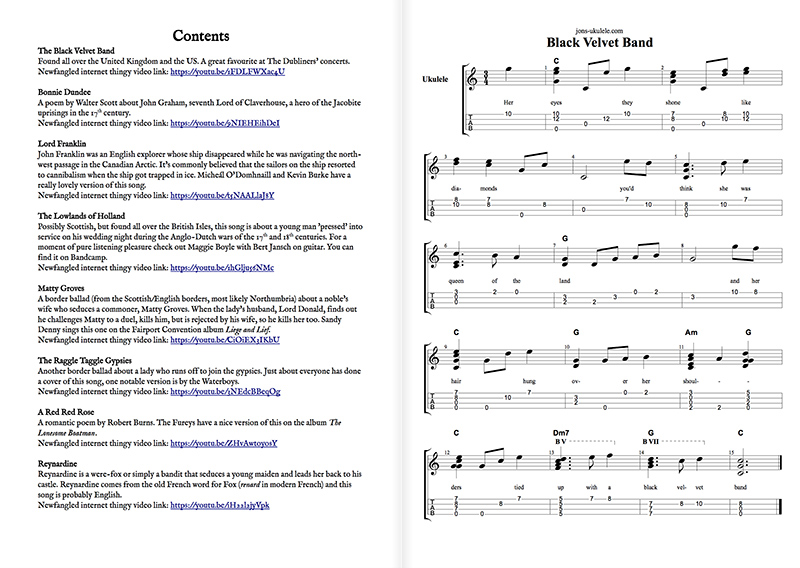

One thing that lacks tablature is stripes. The top row is the thinnest string (A) and the bottom of the four is the thickest string (G). Think of the lip as the neck of a ukulele from a bird's eye view. The ukulele nameplate is easily recognizable, with four horizontal lines on the sides representing the four strings of the ukulele. Like many other successful musicians, I am a self-taught guitarist. Tabs are a simplified way of writing music that works especially well for guitar. Before learning to play music, it is important to have a basic understanding of your instrument.
#Ukulele fingerstyle how to#
How to write and understand guitar tablature Know your guitar. Read the tab from left to right and only play the notes indicated by numbers. The numbers in the lines indicate which fret to play. The Bass tab has four horizontal lines representing each of your strings, the bottom line represents your bottom E string and the top line represents your G string. Now that you know the abbreviations for drums, let's take a closer look at the different symbols in the musical portion of a drum recording. It will be difficult for you to read the different parts of the battery diagram if you don't know the different parts of the battery diagram. One string number is shown per letter space. Most sound pretty boring, but maybe you’ll find a couple you like the sound of. To give you an idea of other four-string picking pattern possibilities, here is a list of all 4-digit combinations. The excitable Aldrine Guerrero provides some tips on creating your own patterns in his video on Ukulele Underground. Other Fingerpicking ResourcesĪl Wood, as always, has put together a nice collection of some patterns with video examples. The best fingerpicking pattern is the one you can pull out of thin air. The main thing is to practice getting your fingers moving independently so you can just freestyle picking patterns off the top of your head. All the four-string combos are explored below, but with every note you add to a pattern the options multiply by huge numbers. These are only a tiny fraction of all the possibilities. The suggested PIMA fingerings are shown above each note, but are certainly not the only way to play each pattern.ġ23-124: The backwards roll (Used often by Jake Shimabukuro) M I P M I Pġ42324: The outside, inside, outside 6 M P I P I PĤ13121: The “Europa” – Easy (a la Herb Ohta Jr.) P I P I P IĤ11311211: The “Europa” – Hard P M I P M I P M IĬlick here for a couple more song-specific examples. Repeat each pattern in an endless loop for as long as needed. One number is a string pick and the strings are numbered like this: The important part is the picking order of the strings. C is used just as an example for the tab.


You can hold any chord with your left hand as you play these patterns. What follows are some fingerpicking patterns for ukulele in tab format.

How to pick the ukulele using PIMA style 10 Ukulele Fingerpicking Patterns: The corresponding PIMA fingers are as follows: P = thumb, I = index, M = middle, A = ring. The pinky finger is unnecessary for playing ukulele in this style because there are only four strings. PIMA is a notation system that assigns a letter to each picking finger, leaving the pinky out. This allows for more comfortable hand positioning and speed. When you pick the strings in a pattern-like way, it begins to make much more sense to use multiple fingers instead of just the thumb. It’s THE detailed strumming and picking guide. This means you pick the 4th-string, 2nd-string, 3rd-string, then 1st-string, one after another.Ī pattern such as 4323 would also sound nice, but it doesn’t move quite as far across the tones of the chord. Many of these patterns intentionally target every string so the entirety of the ukulele is used.įor instance, a common pattern is 4231. Picking Patterns: What are They?Ī picking pattern is a repeating string order that your right hand picks in sequence while holding any chord. The left hand can just hold your favorite chord as you practice picking with the right hand. Let’s focus on just the picking hand for this lesson as we learn some arpeggio patterns. The picking hand controls when they are sounded. The fretting hand controls the notes and harmony (chords). But you can’t just erase the harmony! However, harmony doesn’t have to be a strummed chord.Ī cool thing about playing the ukulele is that we have two hands doing completely different things on the instrument at the same time. Sometimes strumming all the strings is more energetic than a song requires. A picking pattern on the ukulele is a clever way of “melting” a chord you already know.


 0 kommentar(er)
0 kommentar(er)
